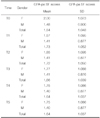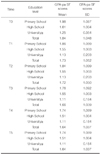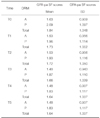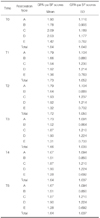1. Hutton B, Feine J, Morais J. Is there an association between edentulism and nutritional state? J Can Dent Assoc. 2002; 68:182–187.
2. Tallgren A, Lang BR, Miller RL. Longitudinal study of soft-tissue profile changes in patients receiving immediate complete dentures. Int J Prosthodont. 1991; 4:9–16.
3. Sierpinska T, Golebiewska M, Dlugosz J, Kemona A, Laszewicz W. Connection between masticatory efficiency and pathomorphologic changes in gastric mucosa. Quintessence Int. 2007; 38:31–37.
4. Fiske J, Davis DM, Frances C, Gelbier S. The emotional effects of tooth loss in edentulous people. Br Dent J. 1998; 184:90–93. discussion 79.
5. Roumanas ED. The social solution-denture esthetics, phonetics, and function. J Prosthodont. 2009; 18:112–115.
6. Watson CL, Reeve PE, Barnes E, Lane AE, Bates JF. The role of personality in the management of partial dentures. J Oral Rehabil. 1986; 13:83–91.
7. Fiske J, Dickinson C. The role of acupuncture in controlling the gagging reflex using a review of ten cases. Br Dent J. 2001; 190:611–613.
8. Akarslan ZZ, Yıldırım Biçer AZ. Influence of gag reflex on dental attendance, dental anxiety, self-reported temporomandibular disorders and prosthetic restorations. J Oral Rehabil. 2013; 40:932–939.
9. Ramsay DS, Weinstein P, Milgrom P, Getz T. Problematic gagging: principles of treatment. J Am Dent Assoc. 1987; 114:178–183.
10. Kassab NH, Al-Saffar MT. Gagging: A problem in prosthetic dentistry and its medical treatment. Al-Rafidain Dent J. 2005; 5:168–173.
11. Akarslan ZZ, Biçer AZ. Utility of the gagging problem assessment questionnaire in assessing patient sensitivity to dental treatments. J Oral Rehabil. 2012; 39:948–955.
12. Van Linden van den Heuvell GF, Ter Pelkwijk BJ, Stegenga B. Development of the Gagging Problem Assessment: a pilot study. J Oral Rehabil. 2008; 35:196–202.
13. Akarslan ZZ, Erten H. Reliability and validity of the Turkish version of the shorter form of the gagging problem assessment questionnaire. J Oral Rehabil. 2010; 37:21–25.
14. Graham R, Mihaylov S, Jepson N, Allen PF, Bond S. Determining "need" for a Removable Partial Denture: a qualitative study of factors that influence dentist provision and patient use. Br Dent J. 2006; 200:155–158. discussion 147.
15. Mohammad AA. Management of gagging patient during intra-oral posterior region radiography. Al-Rafidain Dent J. 2003; 3:1–6.
16. Heft MW, Meng X, Bradley MM, Lang PJ. Gender differences in reported dental fear and fear of dental pain. Community Dent Oral Epidemiol. 2007; 35:421–428.
17. Rodríguez Vázquez LM, Rubiños López E, Varela Centelles A, Blanco Otero AI, Varela Otero F, Varela Centelles P. Stress amongst primary dental care patients. Med Oral Patol Oral Cir Bucal. 2008; 13:E253–E256.
18. Randall CL, Shulman GP, Crout RJ, McNeil DW. Gagging and its associations with dental care-related fear, fear of pain and beliefs about treatment. J Am Dent Assoc. 2014; 145:452–458.
19. Saita N, Fukuda K, Koukita Y, Ichinohe T, Yamashita S. Relationship between gagging severity and its management in dentistry. J Oral Rehabil. 2013; 40:106–111.
20. Aydin K. Socioeconomic and demographic determinants of income distribution in Turkey. Calisma ve Toplum. 2012; 1:147–166.
21. de Siqueira GP, dos Santos MB, dos Santos JF, Marchini L. Patients' expectation and satisfaction with removable dental prosthesis therapy and correlation with patients' evaluation of the dentists. Acta Odontol Scand. 2013; 71:210–214.
22. Zlatarić DK, Celebić A. Factors related to patients› general satisfaction with removable partial dentures: a stepwise multiple regression analysis. Int J Prosthodont. 2008; 21:86–88.
23. Leles CR, Morandini WJ, da Silva ET, de F Nunes M, Freire MC. Assessing perceived potential outcomes of prosthodontic treatment in partial and fully edentulous patients. J Oral Rehabil. 2008; 35:682–689.
24. Murphy WM. A clinical survey of gagging patients. J Prosthet Dent. 1979; 42:145–148.
25. Landa JS. Practical full denture prostheses. London: Kimpton;1954. p. 363–375.
















 PDF
PDF ePub
ePub Citation
Citation Print
Print



 XML Download
XML Download